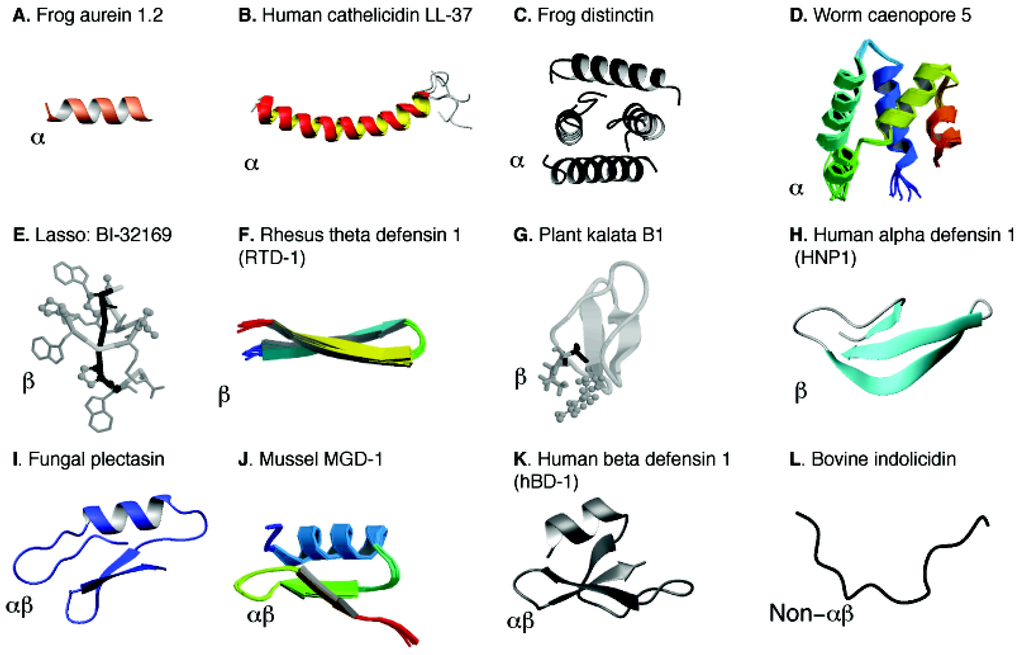Supported by the huge antimicrobial antibiotic resistance in recent decades, the development and discover of alternative and more successful treatments has been encouraged by researches and doctors. One alternative treatment that seems promising way to kill microorganisms by their broad microbial activity is antimicrobial peptides (Zasloff, 2002).
 |
| 3D structure of some antimicrobial peptides |
Antimicrobial peptides are small peptides (15-45 amino acids residues), that are naturally produced by the immune system, and they act via disruption of bacterial membranes, thereby increasing their permeability and decreasing integrity (Shai, 2002). Antimicrobial peptides show little tendency for microbial resistance, due to the lack of a macromolecular target and to the large energetic cost for microorganisms to reorganize their membrane surface (Wimley, 2011).
Understanding environmental factors' relation with the efficiency of antimicrobial peptides can have many advantages for treatment of resistant bacteria. For example, some toxic ions can have synergist effects when combined with antimicrobial peptides, allowing lower doses of peptide which means cost saving, once it is expensive when compared with conventional antibiotics. Moreover, lower doses of peptide and toxic ions can also decrease side effects of treatment.